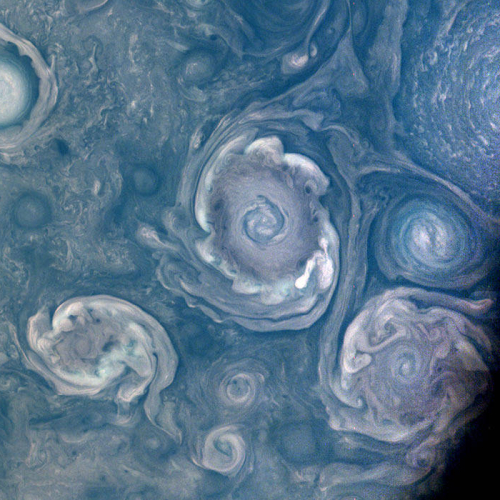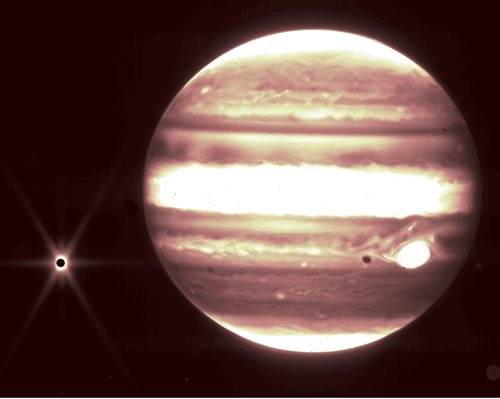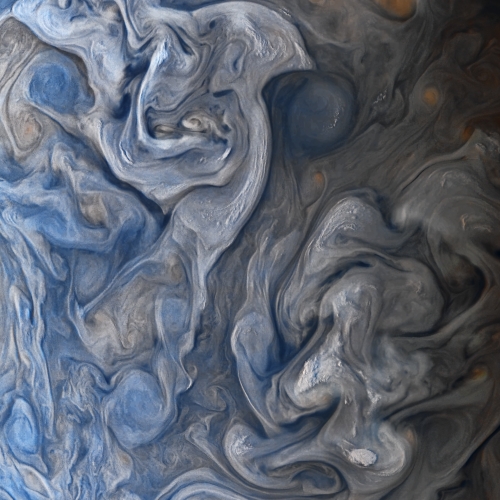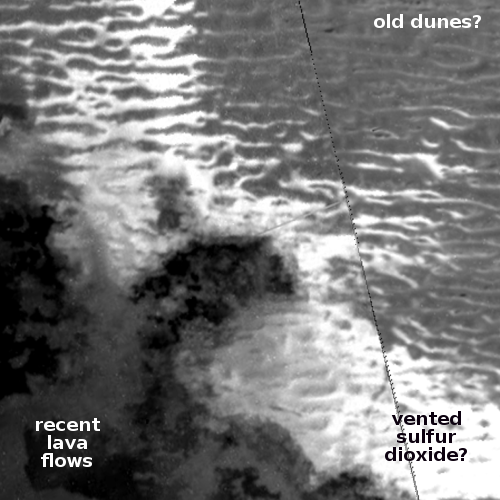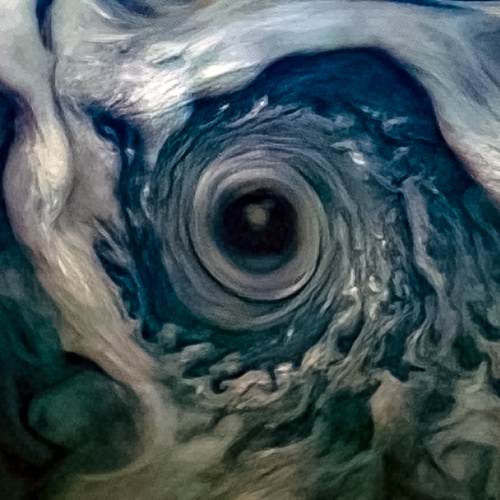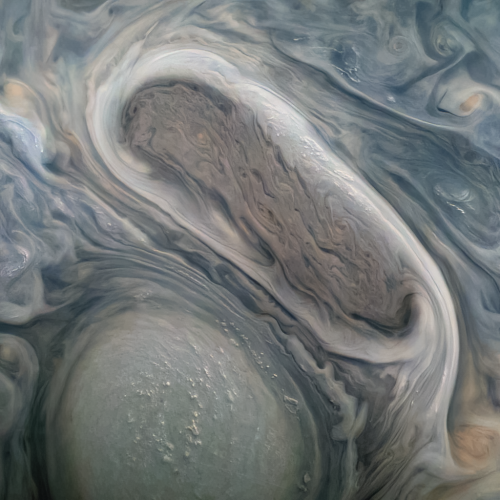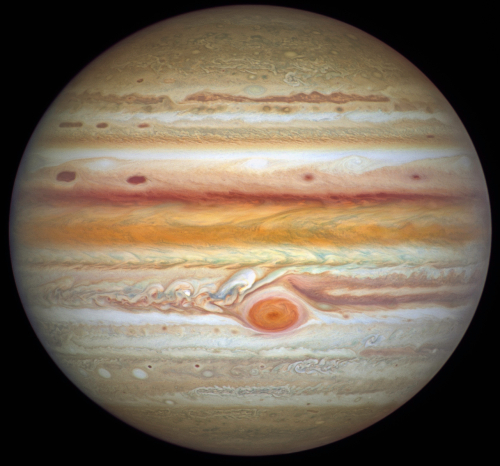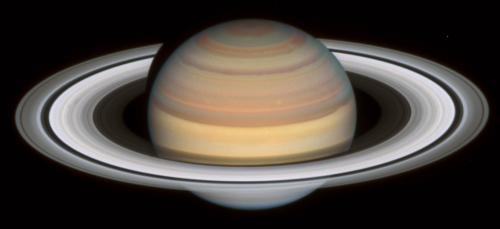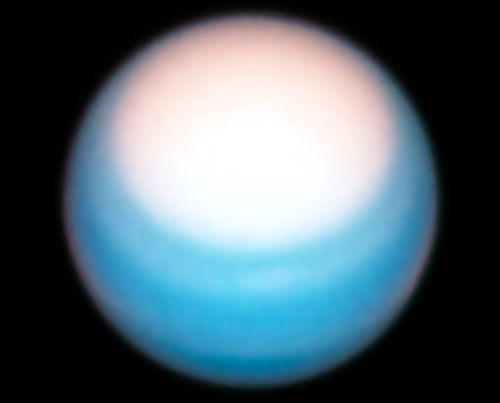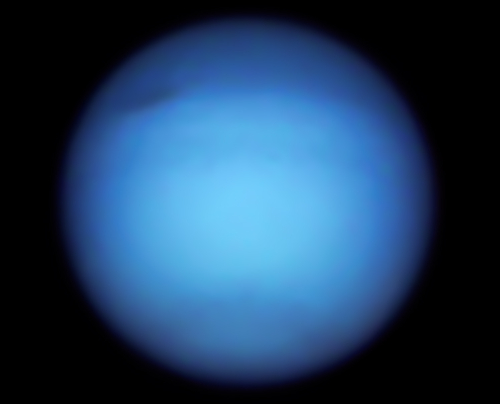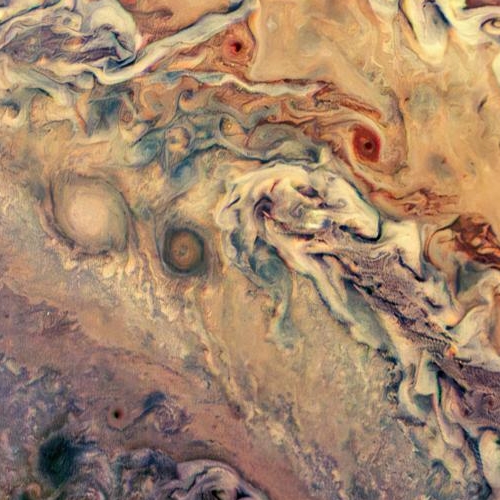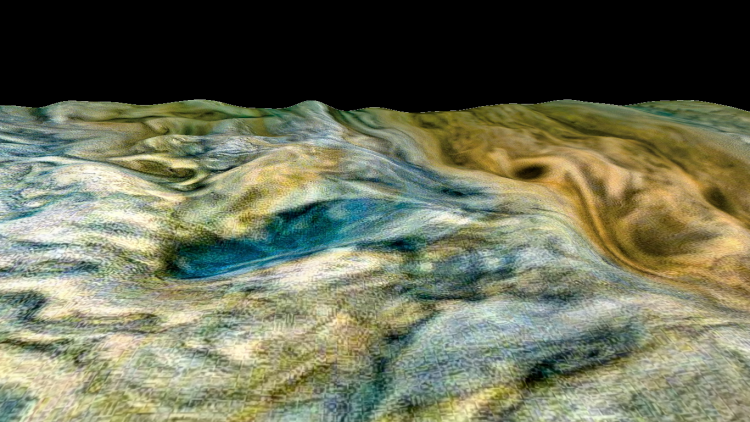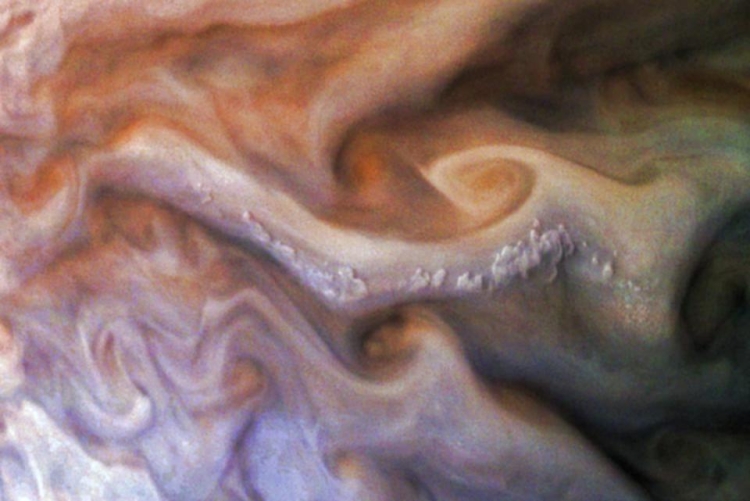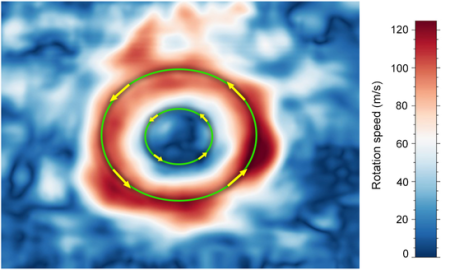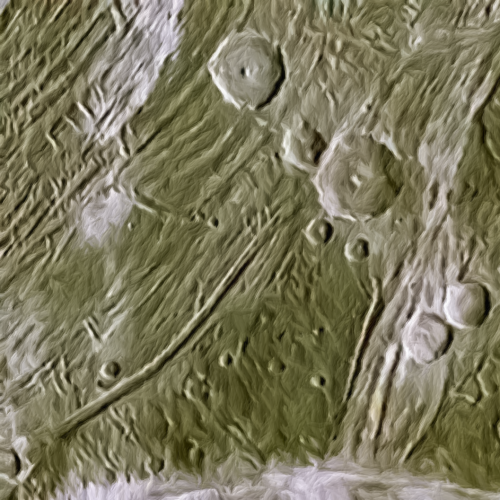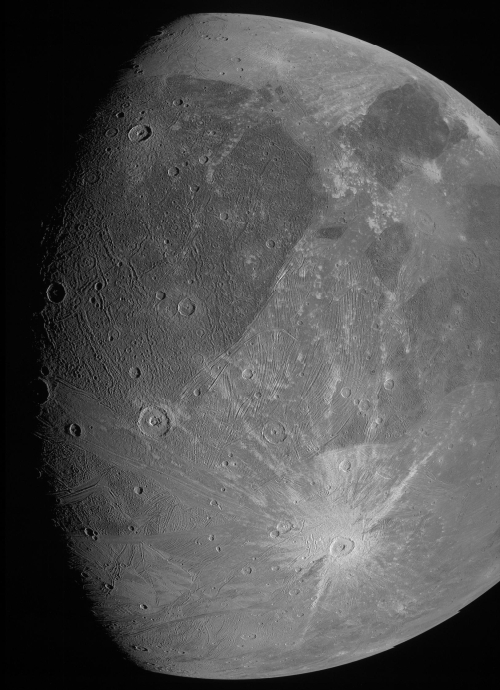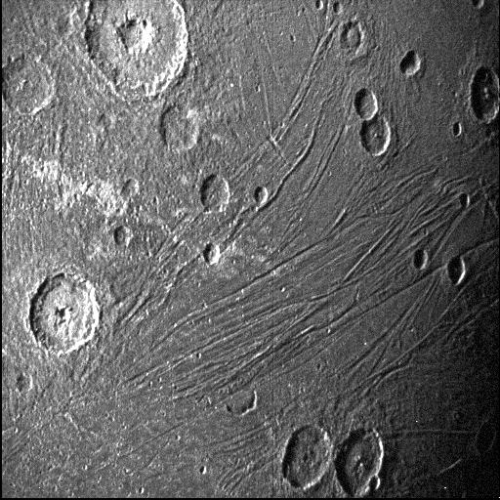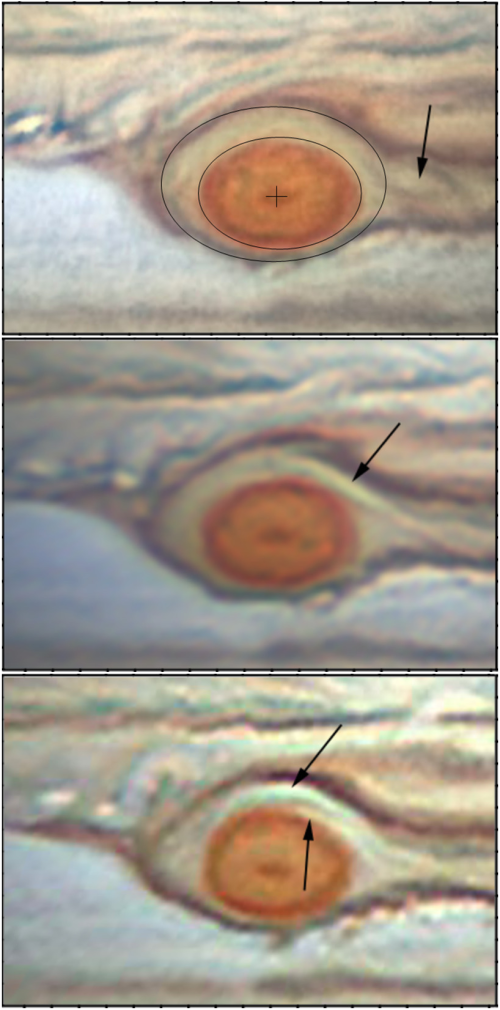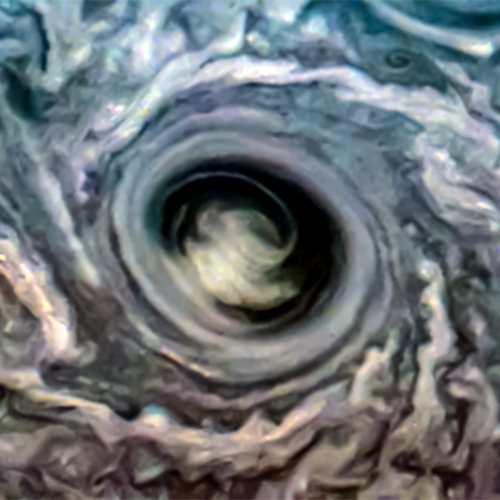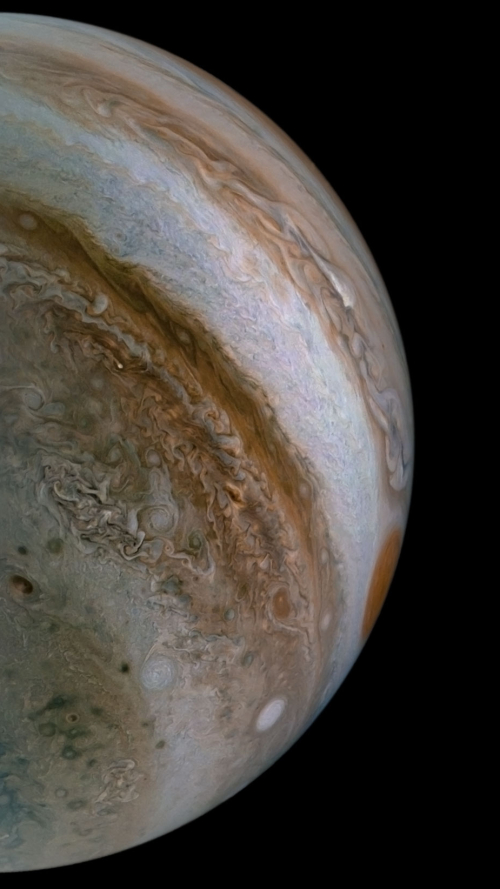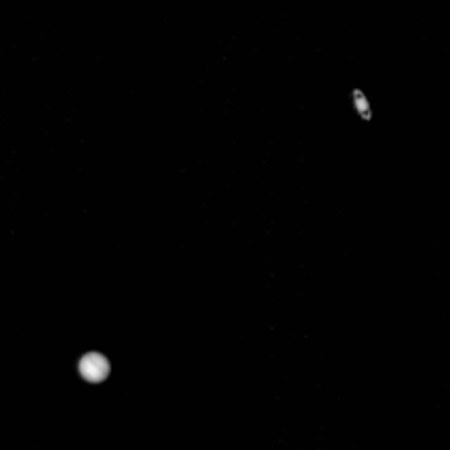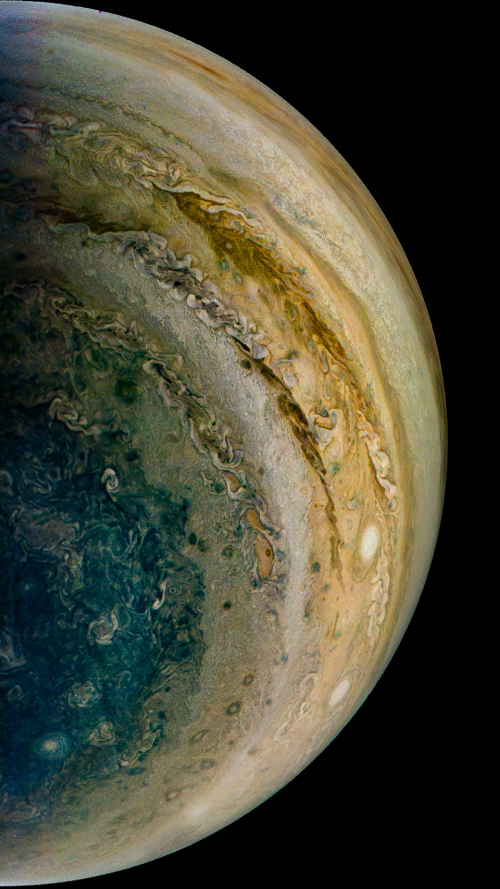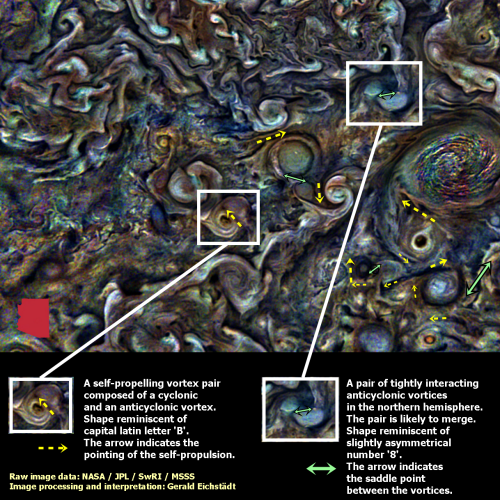The big storms at Jupiter’s poles are coherent and stable
After four years of observations by Juno in orbit around Jupiter, scientists studying the storms at the gas giant’s poles have found that those storms are stable, long-lasting features. From the abstract of their paper:
These data have shown cyclones organized in snowflake-like structures. The Jupiter’s polar cyclones are long-lasting features, which did not disappear or merge during four years of observations.
The image to the right, posted by me earlier this week, shows several of these storms, or vortices, at Jupiter’s north pole. Previous work had documented the overall pattern, as described in the paper:
The observed vortices display geometrical symmetries around both poles: circumpolar cyclones (CPCs), organized in a regular pattern, surround a central one. At the north pole, eight circumpolar vortices form an octagonal structure, while at the south pole, five circumpolar vortices are arranged in a pentagonal pattern; both central polar vortices show some degree of displacements to the geometrical pole, about 0.5° for the Northern Polar Cyclone (NPC) and 1°-2° for the Southern Polar Cyclone (SPC).
While this research has found little change in these storms over four years, it is unknown what their long term evolution will be for an entire Jupiter year, twelve Earth years long.
After four years of observations by Juno in orbit around Jupiter, scientists studying the storms at the gas giant’s poles have found that those storms are stable, long-lasting features. From the abstract of their paper:
These data have shown cyclones organized in snowflake-like structures. The Jupiter’s polar cyclones are long-lasting features, which did not disappear or merge during four years of observations.
The image to the right, posted by me earlier this week, shows several of these storms, or vortices, at Jupiter’s north pole. Previous work had documented the overall pattern, as described in the paper:
The observed vortices display geometrical symmetries around both poles: circumpolar cyclones (CPCs), organized in a regular pattern, surround a central one. At the north pole, eight circumpolar vortices form an octagonal structure, while at the south pole, five circumpolar vortices are arranged in a pentagonal pattern; both central polar vortices show some degree of displacements to the geometrical pole, about 0.5° for the Northern Polar Cyclone (NPC) and 1°-2° for the Southern Polar Cyclone (SPC).
While this research has found little change in these storms over four years, it is unknown what their long term evolution will be for an entire Jupiter year, twelve Earth years long.

